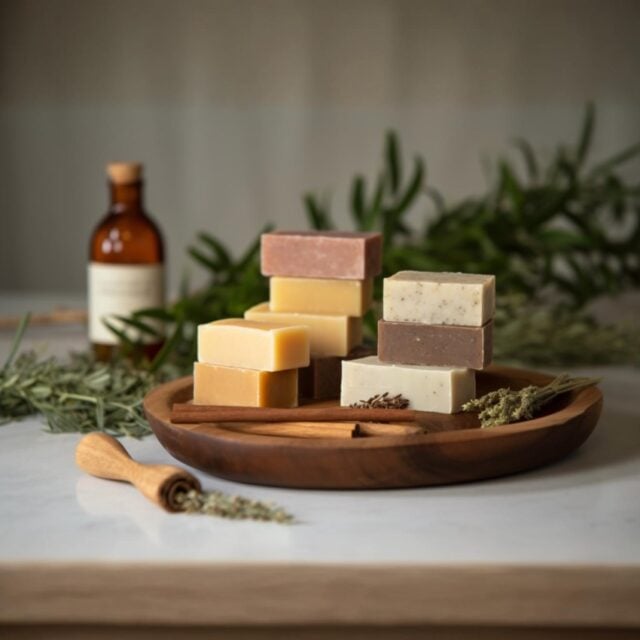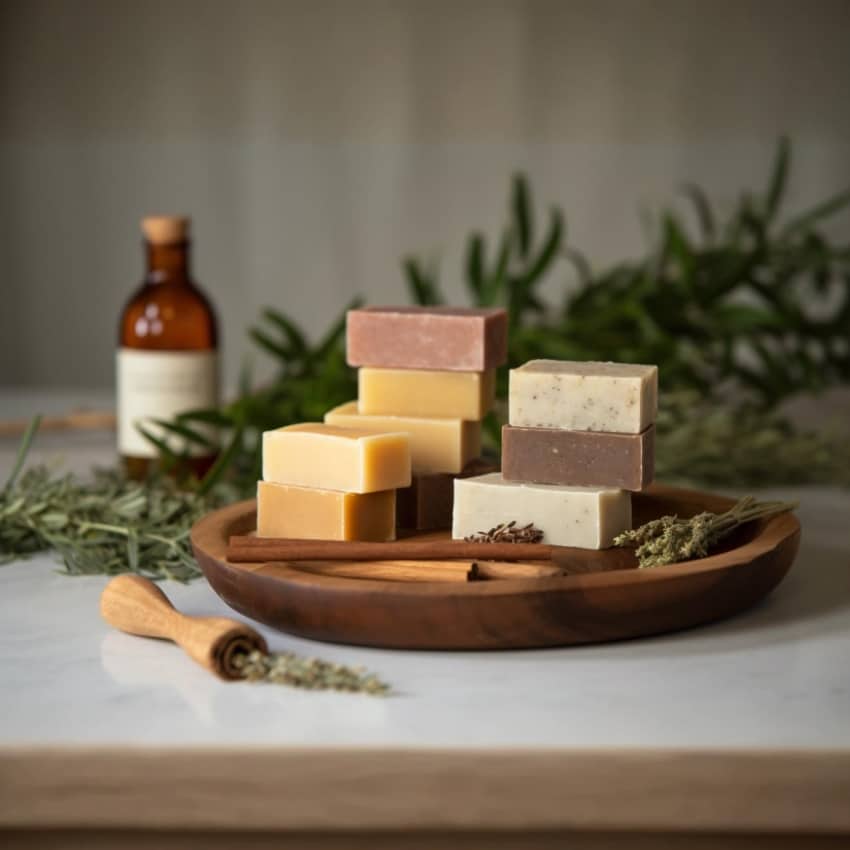
It’s not enough to just have a good formula and nice packaging to sell bar soaps in the EU. You have to follow EU cosmetic rules if you want to make small batches of handmade soap or start a whole line of commercial soaps. This guide provides comprehensive information, covering everything from saponification labeling to microbiological testing and safety reports.
Let’s go over the exact steps you need to take to legally and safely sell your soap in the EU.
Step 1: Understand If Your Soap Is a Cosmetic Product
Different types of soap are not all the same. If soap is meant to clean or beautify the skin, it is considered a cosmetic product in the EU.
When Is Soap Regulated as a Cosmetic in the EU?
According to EU Regulation (EC) No 1223/2009, cosmetic products are substances or mixtures that are meant to be put on the skin to clean, scent, or beautify it. That includes regular bar soaps, even the ones you can buy at craft fairs.
Soap that is sold for cleaning the house or for other uses may not be covered by cosmetic laws. If it’s sold as a skin product, though, it’s a cosmetic. And that means you have to follow all the rules.
Step 2: Finalize Your Formula Through Saponification
The chemical process that converts oils and lye into soap is called saponification. When the ingredients are saponified, they change into a new compound. This is important for labeling.
Ingredient Declaration Must Reflect the Final Composition
You can’t put “Olive Oil” on your cosmetic label as an ingredient. It turns into Sodium Olivate after saponification, and that’s what you need to list as an ingredient. According to EU labeling rules, you must list the finished ingredients using INCI (International Nomenclature of Cosmetic Ingredients).
This is a very common mistake that people who sell handmade soap make. Keep in mind that you need to label what is in the final bar, not what you put in the pot.
Step 3: Obtain a Cosmetic Product Safety Report (CPSR)
A valid CPSR is required for all bar soap sold in the EU. This applies equally to handmade soap and industrial products.
What Does a CPSR for Soap Include?
It is a legal requirement for a qualified safety assessor to do the CPSR. There are two main parts to it:
Part A: Product Information: This includes the full INCI formulation, how it is made, how it is packaged, microbiological specifications, and stability data.
Part B: Safety Assessment: The toxicological profile, margin of safety, allergen risks, and final decision from a licensed assessor.
For IFRA compliance, soaps that have essential oils, colorants, or fragrances need a full allergen analysis.
CPSR for Handmade vs. Commercial Soaps
The requirement is the same whether you sell 50 bars a month or 50,000. Handmade soaps are not free from this. We help producers of all sizes by making the CPSR process easier at Certified Cosmetics. We make sure that your formulation is checked, your papers are correct, and your final report meets all the rules.
Check out our CPSR for Soap Service
Step 4: Conduct Microbiological Testing
Bar soap usually doesn’t have a lot of water activity, but microbiological testing may still be needed to show that it’s safe to use.
When Is It Required for Bar Soaps?
You may need to test your soap for the following things according to industry standards and the Cosmetics Europe guidelines:
- TAMC (Total Aerobic Microbial Count)
- TYMC (Total Yeast and Mold Count)
Testing is very important if you are using botanicals, natural additives, or making something in a small, non-sterile space. These results back up the CPSR and are included in your Product Information File.
Step 5: Create Your Product Information File (PIF)
The PIF is a file that shows that your product meets all the rules. It needs to be easy to get to (usually by the Responsible Person) and given to EU authorities when they ask for it.
Required Documents for Bar Soap PIF
Your PIF needs to have:
- Full INCI recipe
- How to make it
- Testing for stability and shelf life
- Results of microbiological tests (if any)
- CPSR: Cosmetic Product Safety Report
- Proof of Good Manufacturing Practice (GMP)
Certified Cosmetics helps you put together your PIF and makes sure it is in the right format.
Step 6: Notify Your Product on the CPNP
You have to tell the EU about your soap before you can sell it there. You can do this through the Cosmetic Product Notification Portal (CPNP).
What You Need to Submit
- Name and use of the product
- Information about the responsible person
- List of INCI ingredients
- Picture of the outside of the package
- Label and safety warnings, if needed
Support from Certified Cosmetics
We take care of the whole CPNP process, from setting up accounts to entering data. You will save time and avoid the mistakes that often cause rejection or delays.
Step 7: Label Your Soap in Full Compliance
It is required to have clear, legal labels. Your product might not be available for sale without it.
Label Elements Required Under EU Law
The label on your bar soap must have the following:
- Name of the product and what it is for (if not clear)
- List of INCI ingredients in order of importance
- Name and address of the Responsible Person in the EU
- Weight in grams
- Number of the batch or lot
- PAO (Period After Opening) symbol, if it applies
- Country of origin (if the item was made outside the EU)
If your soap has allergens from essential oils or fragrances, you must also list them if they are above certain levels.
Selling Handmade Soap Online in the EU
You can sell handmade soaps on sites like Etsy or your own webshop, but you still have to follow EU rules for bar soap.
Platforms, Markets, and Packaging Tips
- Even for online listings, make sure to include all required label elements
- Use packaging that is safe and clean
- Show the whole list of ingredients in the product description
- Think about getting eco-certifications to make customers trust you more
You can sell handmade soap in the EU as long as you follow the rules.
Frequently Asked Questions (FAQ)
Q1. Do I need a CPSR if I only sell soap at local markets?
Yes. Under EU law, all cosmetics, even handmade soaps sold at craft fairs or local markets, need a CPSR.
Q2. Can I use “Olive Oil” on my soap label?
No. You must say what the last ingredient is, Sodium Olivate, based on the saponification result. It is required to have INCI names.
Q3. Is microbiological testing essential for solid soap?
Yes, in many cases. Even though bar soap is less likely to get dirty, the test results back up the safety assessment and PIF.
Q4. Can I use essential oils in my handmade soap?
Yes, but they must be used safely, and if they contain more than the legal limit of allergens, the label must clearly indicate this.
Q5. What happens if I don’t register my product on the CPNP?
It is against the law to sell cosmetics that are not registered. It could lead to bans from the market, fines, or being kicked off online platforms.
Summary: Bring Your Soap to Market with Confidence
It’s not hard to launch a bar soap in the EU, but you do need the right paperwork and to follow the rules.
At Certified Cosmetics, we help all kinds of soapmakers follow EU rules for cosmetics. We make the process easy and reliable, whether you need a CPSR for handmade soap, help with your cosmetic PIF for soap, or full CPNP support.
Start with a CPSR for soap. Find out more about Certified Cosmetics’ compliance services

